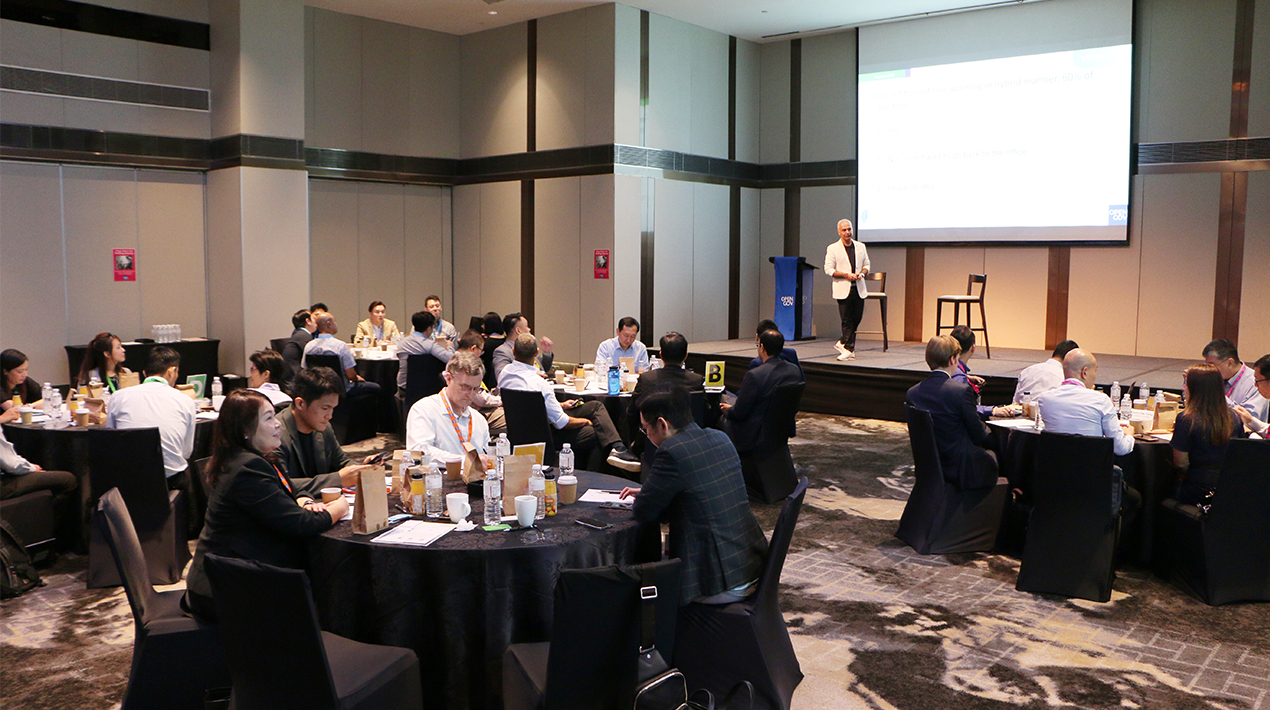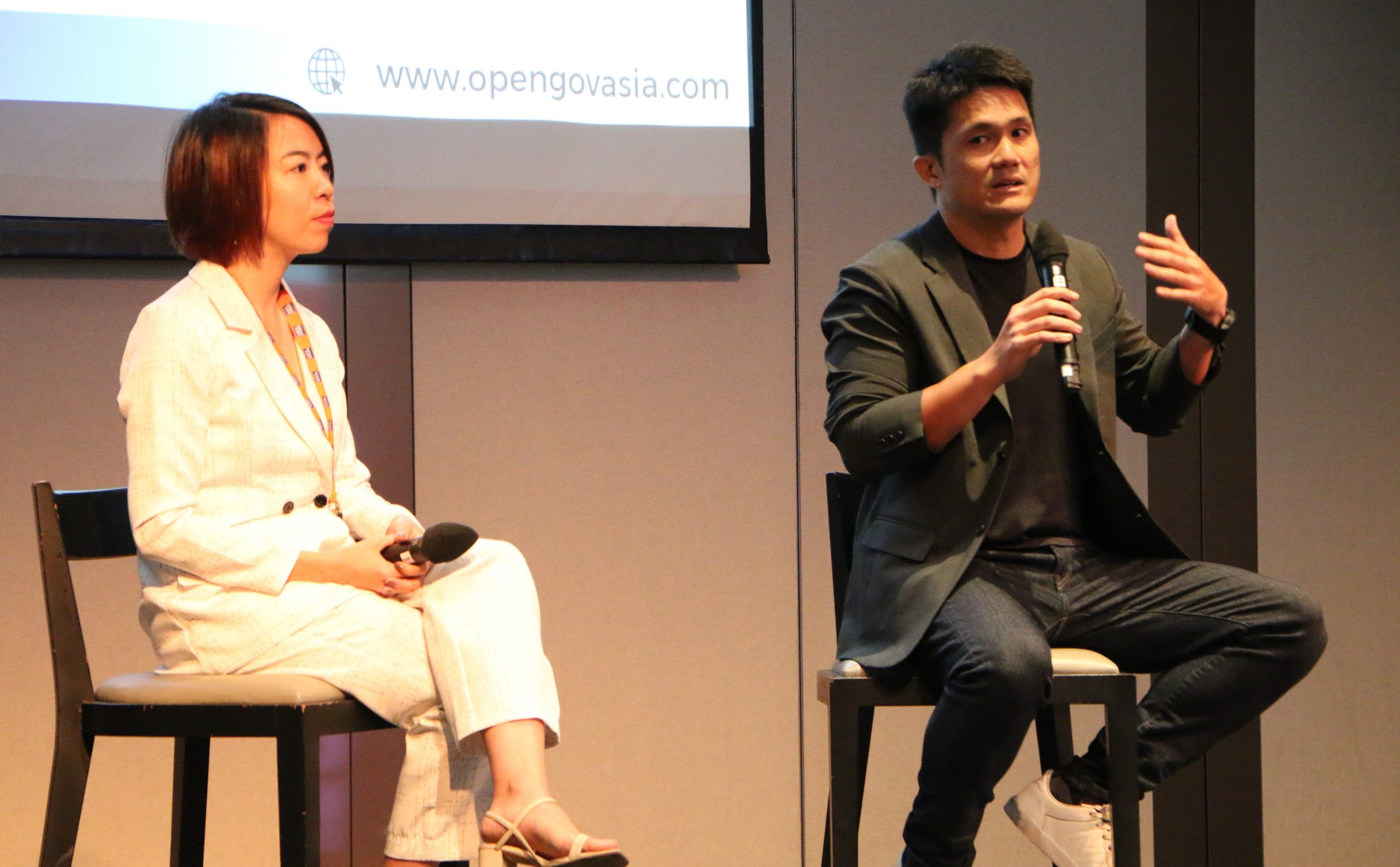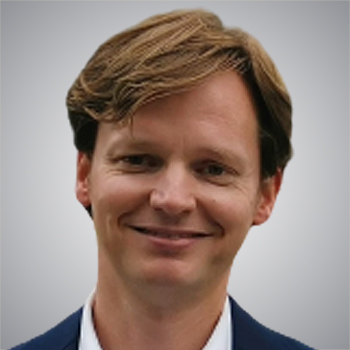
In the wake of the pandemic, industries have had to reconsider their functioning as almost all activities and operations were disrupted. To increase ensure business continuity and organisational coherence and embrace digitalisation, businesses have significantly accelerated their digital transformation process.
With this, organisations are now increasingly seeing the value of 5G with its increased reliability and cellular reach. Additionally, current technology’s high latency could be prohibitive for companies that depend on technology for their operations.
Such lags are eliminated by 5G networks, which can transfer huge volumes of data continuously without buffering and perform effectively across all organisations. This new networking standard puts data-intensive operations such as AI and data analytics closer to real-time processing and analysis.
While IoT is not new to most, a new technology known as IoB is on the rise because of huge gains in data analytics. Internet of Behaviour (IoB) enables businesses to provide clients with services based on their preferences, interests, and decisions. Using data analytics, a behavioural trend analysis produces recommendations depending on the tastes of the consumers.
The OpenGov Breakfast Insight on 23 August 2022 offered the most recent information on 5G capabilities and how it supports IoB and Metaverse innovations in the public sector.
Connecting the World Through 5G and Metaverse

Mohit Sagar, CEO & Editor-in-Chief, began the session by acknowledging that 5G and the Metaverse are inextricably linked. IoB, for example, aids in the response to specific emergencies by utilising real-time transmission and residence information.
“To translate big data analytics into actionable insights at the appropriate time, a reliable connection, such as 5G, is required,” says Mohit. “Moreover, future technologies could significantly improve the operation and delivery of existing services.”
The data and traffic growth of Metaverse-essential content such as augmented reality (AR) and virtual reality (VR) is primarily driving this rate of new telecom technologies. Self-driving cars and the concept of highways beyond VR were not viable until recent advances in 4G and 5G, and certainly not during the 3G period.
The Metaverse allows enhanced government-to-citizen communication and transparent collaboration. With the implementation of 5G, the new Metaverse era can support the government in expanding its trade and commerce in this new normal.
It might also be used to address problems like how to cover a city with a 5G network capable of sustaining a public Metaverse infrastructure, preferably through virtualisation.
With 5G, traffic controllers, who play a big role in roadside safety and AI-powered cars, can stay connected. This is done by using 5G to send information in real-time so that traffic flow can be tracked, managed and improved. This makes transportation more efficient and safer in smart cities.
Improving people’s lives in a smart city involves large data and analytics in conjunction with an awareness of individual preference. IoB’s user information data can be utilised by government agencies to provide solutions to challenging problems.
Mohit highlighted that to make better decisions and enhance the quality of life, smart cities use data and digital technologies. “With more complete, real-time data, agencies can track events as they happen, understand how demand patterns are changing, and come up with faster, cheaper solutions.”
Around the world, well-known cities have already invested in technological revolutions to improve their quality of life. It is better to stay abreast of the latest trends than play catch-up later.
Welcome Remarks

StarHub, according to Nikhil Eapen, Chief Executive and Executive Director, is a one-of-a-kind Singapore digital platform with two million customers across the region.
StarHub is a worldwide communications, entertainment and digital services provider. They offer superior mobile and fixed services, premium content and communication solutions to people, homes and businesses through its vast fibre and wireless infrastructure and global connections.
“We want to collaborate with you as partners, whether you are a government agency, enterprise or consumer,” says Nikhil. “Metaverse is the only thing that can bring us all together in the same way.”
He is convinced that the Metaverse offers more incredible opportunities for businesses or even the government to act as a point of interest and attract people.
Recent developments, too, play their part. Micro cloud – a new type of infrastructure for on-demand computing at the edge – comes to mind. Micro cloud assembles custom edge computing solutions from the best open-source components, anywhere and in large quantities. It enables ecosystems rather than single-vendor solutions, bringing apps closer to users.
StarHub plans to bring its expertise not just to the edge but also to the micro edge, like holding a hologram meeting. He adds that they are committed to doing their business responsibly and sustainably.
StarHub is transitioning from a telco to a full-service provider of digital life and digital services, providing customers with the most enriching connectivity, entertainment, and other lifestyle experiences, as well as innovative business solutions, with frictionless digital engagement at the core.
“We design and deliver solutions embracing artificial intelligence, cybersecurity, data analytics, the Internet of Things, and robots to corporate and government clients.”
Nikhil invites customers, partners and communities to join them on their digital journey as they radically simplify everything they offer, double down on digital for maximum agility, cement the network superiority, and drive long-term growth across all segments, “Without the will, there will be no change together.”
In Conversation With: Transitioning to a New Metaverse Era: The Needs for Cutting-Edge Government Technology

The Metaverse is being seen as the next step in the growth of the internet. People will work together using a digital copy or avatar of themselves in places like business meetings, online communities and games.
“A networked virtual environment called the Metaverse allows users to create, work, play, socialise, and conduct business in a fully working economy that can rival the actual one,” says Darren Ho, Managing Director of DataFi Future and Head of Business Development of Metaviva A MM2 Entertainment Company. “The Metaverse is conceptually like Web 3.0 and thus benefits from blockchain technology like NFTs and Cryptos.”
The Metaverse is essentially an additional dimension in which people live virtual lives, according to Nicole Nguyen, CMO & Co-Founder, Duelist King, “in which technology acts as more than a mere instrument. Avatars or digital representations of people, digital items, and operating economies are all features in the Metaverse.”
Nicole explains that the internet connects billions of computers, millions of servers and other electronic devices. Once online, internet users can interact with websites, communicate with one another and purchase and exchange items and services.
Users can navigate a virtual world that mimics portions of the real world in the Metaverse by using technologies such as virtual reality (VR), augmented reality (AR), artificial intelligence (AI), social media, and virtual currency. People “browse” the internet, but they can also “live” in the Metaverse in some ways.
Because of the internet’s growth, numerous services that are paving the way for the creation of the Metaverse have emerged. Among the technologies used in Metaverse include social networking, internet shopping, natural language processing, digital money, workplace automation, and infrastructure.
The tremendous potential that the Metaverse offers can be used by the government. The public can access a variety of services and apps offered by the Metaverse. Healthcare, agriculture, education, tourism, environment protection, smart cities, social and political engagement, defence, libraries, museums, media, and others are likely applications of the Metaverse.

Similarly, the epidemic has cruelly reduced people’s mobility, which directly jeopardises citizens’ access to services and applications.
The Metaverse might serve as a platform for users to easily access services and applications using software that simulates the three-dimensional world that inhabits. As a result, the Metaverse might be re-envisioned as a viable option for delivering services and applications to the public. It could allow for improved communication and involvement between the government and its citizens.
Thus, the Metaverse can help the government accelerate its efforts to resurrect trade and commerce that has been harmed by the outbreak.
While governments may need to realise the relevance of Metaverse and jumpstart it, it will need to be created and sustained with the support of 5G firms, the majority of which are in the private sector. This places a great deal of responsibility on both the government and the business sector; perhaps a public-private collaboration is a viable alternative.
Many aspects and requirements that go beyond simple connectivity must be addressed in the context of the Metaverse.
The networks needed for the Metaverse must be substantially more demanding than the best-effort mobile broadband services currently available. These networks must be highly dependable and have high throughput and limited latency.
However, there are still issues with network densification, spectrum availability, an increase in indoor and outdoor capacity, and the coexistence of XR services, mission-critical communications and mobile broadband in wide-area networks. On the other hand, 5G is prepared to deliver that.
Providing cutting-edge networks is insufficient. All ecosystem participants must collaborate and contribute strategically to a unified R&D and standardisation plan. Without such close collaboration, the Metaverse may not exist for many years.
 Before implementing digital-led innovation in public services, cyber resilience and personal data protection should be required.
Before implementing digital-led innovation in public services, cyber resilience and personal data protection should be required.
In the aftermath of the pandemic and consequent restrictions, work has shifted to cyberspace. This has had a deep impact on people’s lives, as in-person meetings are being replaced by virtual ones. Even though this is becoming more common, the transition to the Metaverse may have some negative consequences in terms of how people interact.
Not only would the Metaverse make it more difficult for people to communicate with one another, but it could also lead to more people preferring the virtual world over the real one. People are likely to have even fewer reasons to meet, such as fewer shared meals, parties, gatherings, public ceremonies, and so on.
In addition, the Metaverse will allow people to be and do anything they desire; there will be no monetary or physical limitations. The Metaverse may be the place where everyone feels pleased and valued, and it could become an increasingly safe and secure refuge when real life becomes a burden or is too difficult or harsh to handle.
It is feasible that virtual reality will radically alter the social and emotional needs of individuals throughout time. People may stop ‘needing’ or desiring authentic social contacts if they become unfamiliar with them.
Inequalities are also getting worse when it comes to the digital divide, and they are likely to get even worse in the Metaverse.
The Metaverse could be great for people who have the bandwidth, connectivity, and hardware to use it, but it could make it even harder for people who are already left out of the digital world, which would go against their plans to bring people together.
 Privacy and security are two additional aspects of the Metaverse that may not receive adequate consideration. As an illustration, consider the regulations that permit third parties to gather information about users and their friends while ignoring material that might be detrimental to kids and teenagers.
Privacy and security are two additional aspects of the Metaverse that may not receive adequate consideration. As an illustration, consider the regulations that permit third parties to gather information about users and their friends while ignoring material that might be detrimental to kids and teenagers.
Marketers and ad agencies will be able to monitor a person’s body movement, eye movement, brainwaves, and physiological reactions to an encounter in the Metaverse. They will also be able to track which virtual environments a person enters and how long they spend in there.
Immersive virtual business meetings or social events could appear harmless, but the Metaverse’s immense potential drawbacks include growing disconnection from reality and addiction to virtual reality. The Metaverse might be the most addictive thing ever made, or it might be a virtual paradise.
“We can only imagine how much more addicting a completely immersive Metaverse would be, where all of our senses will be even more fully engaged and real life will increasingly recede into the background,” says Nicole.
Most people are currently getting more and more reliant on their screens and technology. It is critical not to underestimate the power of escapism, which can exacerbate alienation and withdrawal from reality.
Even though technology has enabled individuals to connect with more people from more locations than they could have ever imagined, it is important to maintain a balance between connections in embodied and digital spaces and to maintain communication skills such as eye contact and voice-to-ear communication.
5G Transformation for New Generation

According to Sander Veraar, VP of Product Management, Enterprise Business Group, StarHub, the industry is expected to grow significantly with the launch of the 5G network. “There are significant aspects of tectonic shifts between 5G, Compute and Spatial.”
In the upcoming years, 5G is anticipated to bring about enormous economic and social benefits, making it a very lucrative field for investment. 5G is being quickly welcomed by the telecom industry and other businesses across various industries because it promises extremely high bandwidth, extremely low latency, and extremely high reliability.
A revolutionary step forward in communications, 5G is built on top of a new network architecture that will open a wide range of applications and is supported by numerous new enabling technologies including AI, IoT, cloud computing, and edge computing.
Disruptive technology does, however, provide issues, not just in terms of network change but also in terms of how it will impact corporate productivity or efficiency.
Scalability and unparalleled global reach of the evolution of computing and Web 3.0, also known as the third-generation internet, is the World Wide Web’s next evolution, “It offers a data-driven Semantic Web that uses a machine-based understanding of data to create a more intelligent and connected web experience for users.”
Today’s Web is immobile and unable to adapt to the unique needs of each person who uses it. Spatial Web (Web 3.0) is expected to be more dynamic and participatory. It will redefine the web experience with structural changes to ensure democratisation across all aspects of the internet by implementing artificial intelligence and blockchain technology.
Together with its linked technology partners, it would be responsible for the new industrial transformation. It would reuse every business model while yet altering how the world functions to make life more intelligent and fascinating.
Sander believes that “the future is today” and emphasised that StarHub has a place where technologies can be tried out and used to help build the future. It has also a partner ecosystem and independent software vendors together to harness these technologies and deliver them such as spatial platforms, VR streaming and holographic projection.
Understanding Human Behaviour: Motivation is the Key to the Success of Most Initiatives

True transformation, according to Lawrence Lim, Head of SmartHub Analytics Division, is about understanding what truly motivates people and changing human behaviour. “While technology and analytics extract actionable insights from data, understanding human behaviour and motivation is the key to the success of most initiatives.”
Data allows people to understand humans better. However, data from Metaverse should be interpreted a bit differently because it is an alter ego it’s not the real person. “The thing you do not do in real life probably you do in Metaverse.”
Similarly, Metaverse should make use of online behavioural and physical location datasets to identify and better understand customer profiles to optimise engagement and experience. All of this is possible with 5G because it must be real-time.
The digital world will be the next revolution, and inbuilt behaviour will play an important role in making this technology a globally accepted technology that may even create new opportunities. As a result, the Metaverse is a hook that will penetrate human behaviour and fascinate people in the digital world.
Recent advancements in digital technologies and data analytics have created previously unimaginable opportunities for evaluating and changing health behaviours. As a result, science’s ability to comprehend and contribute to the improvement of health behaviours and outcomes has been significantly enhanced.
The diversity and granularity of people’s behaviours, the confluence of elements that affect behaviour now, and the evolution of behaviours through time inside an individual are all captured by digital health data.
There are several following indicators for creating value and understanding human behaviour:
- Identify target audience segments
- Craft value proposition with ‘Competitor’ analysis
- Craft value message with consumer moments
- Motivate visit to next Point-of-interest
- Optimise experience with visitor movement insight
- Innovate new experiences to acquire new visitors
 He adds that “it’s critical that we maintain our identity amidst the rapid digital transition.” People must be careful to make emotional wise use of the vast customer data sets they are producing as it will have an impact on human behaviour.
He adds that “it’s critical that we maintain our identity amidst the rapid digital transition.” People must be careful to make emotional wise use of the vast customer data sets they are producing as it will have an impact on human behaviour.
As a result, by combining data with customer insight, enterprises will be able to communicate with customers in relevant, direct, and consistent ways.
Closing Remarks
Sander reiterated that it may be more useful and fascinating to view the metaverse not as virtual reality but as a new reality. Things made there and actions we choose to take there will be incredibly real. In this scenario, it might become a space for both work and recreation.
The Metaverse has a lot of work to do, particularly in healthcare and education and Starhubis willing to help the nation build the future of the next generation.
Nikhil acknowledged the delegates’ participation and expressed optimism about collaborating with government agencies. He was confident that “we can change the way Singapore can live, work, and play.”
According to Mohit, a digital transformation partner helps businesses identify areas and functions within their organisations that could benefit from digital technology, find the best solutions, and properly implement them.
By leveraging their unique experience, partnerships can create truly disruptive infrastructure solutions to assist organisations on their digital transformation journey.
“Even within specialised industries such as banking, healthcare, and manufacturing, our partners can expand upon our product offering to create more customised, service-based solutions that meet the unique requirements of their customers,” Mohit concludes.
















